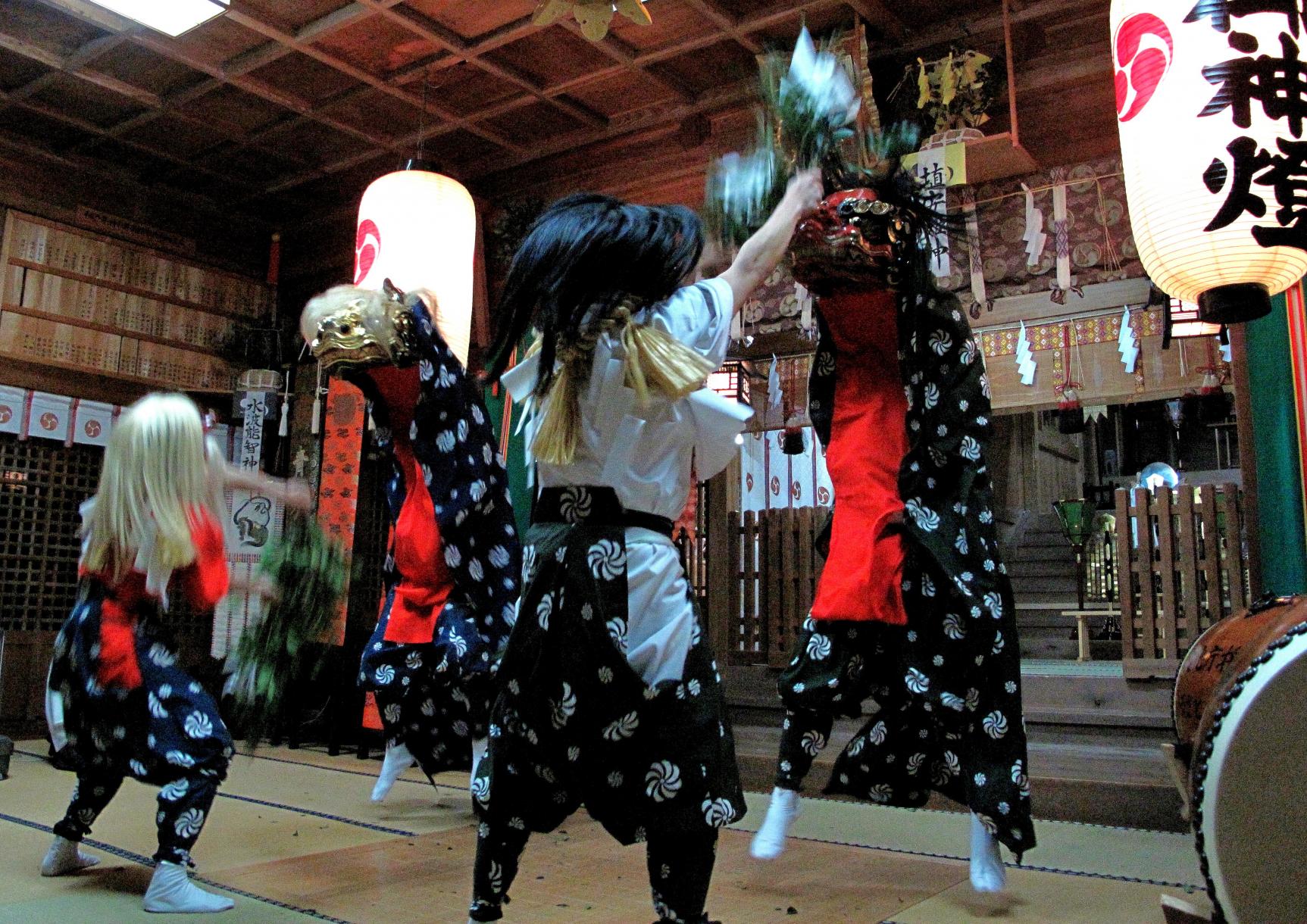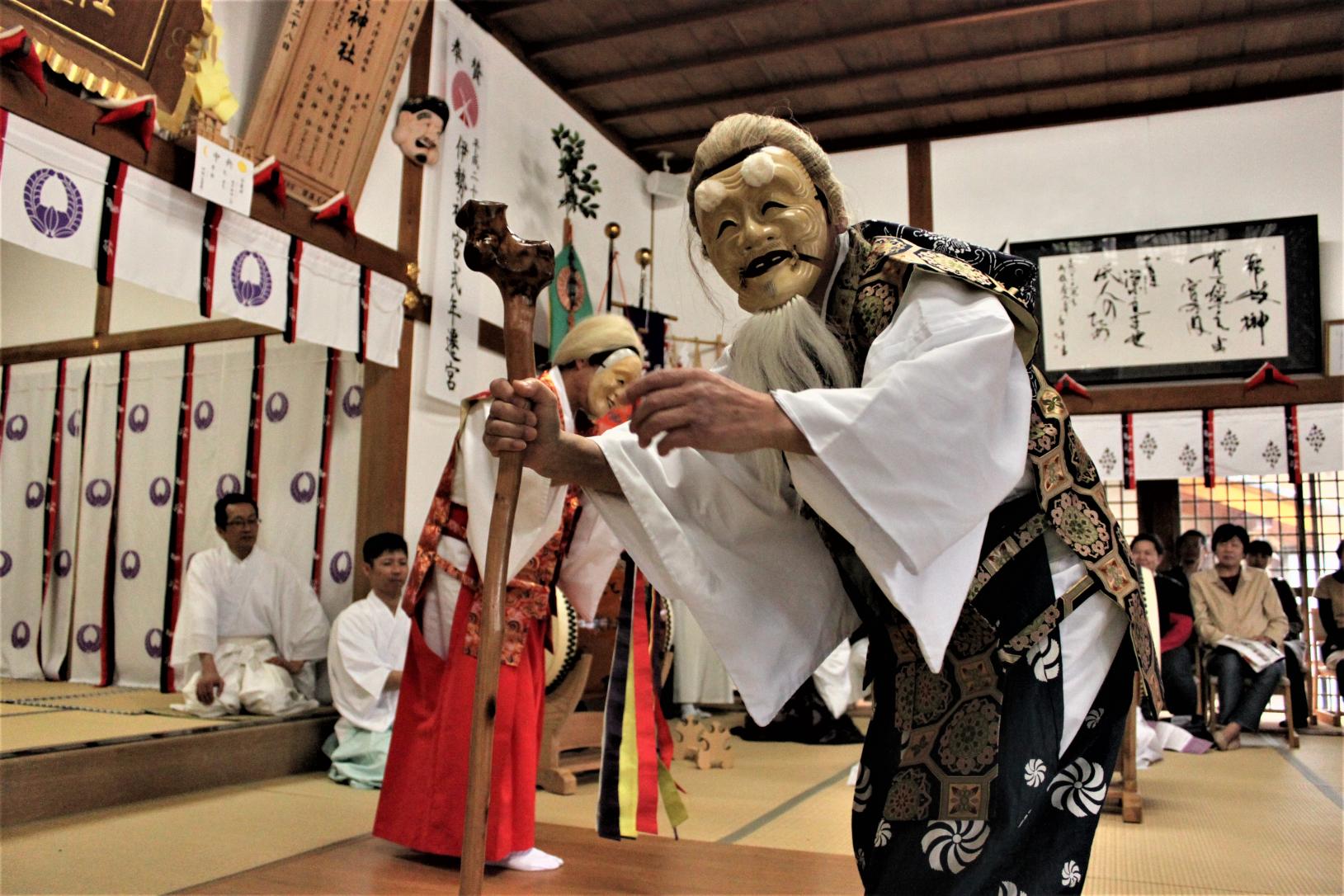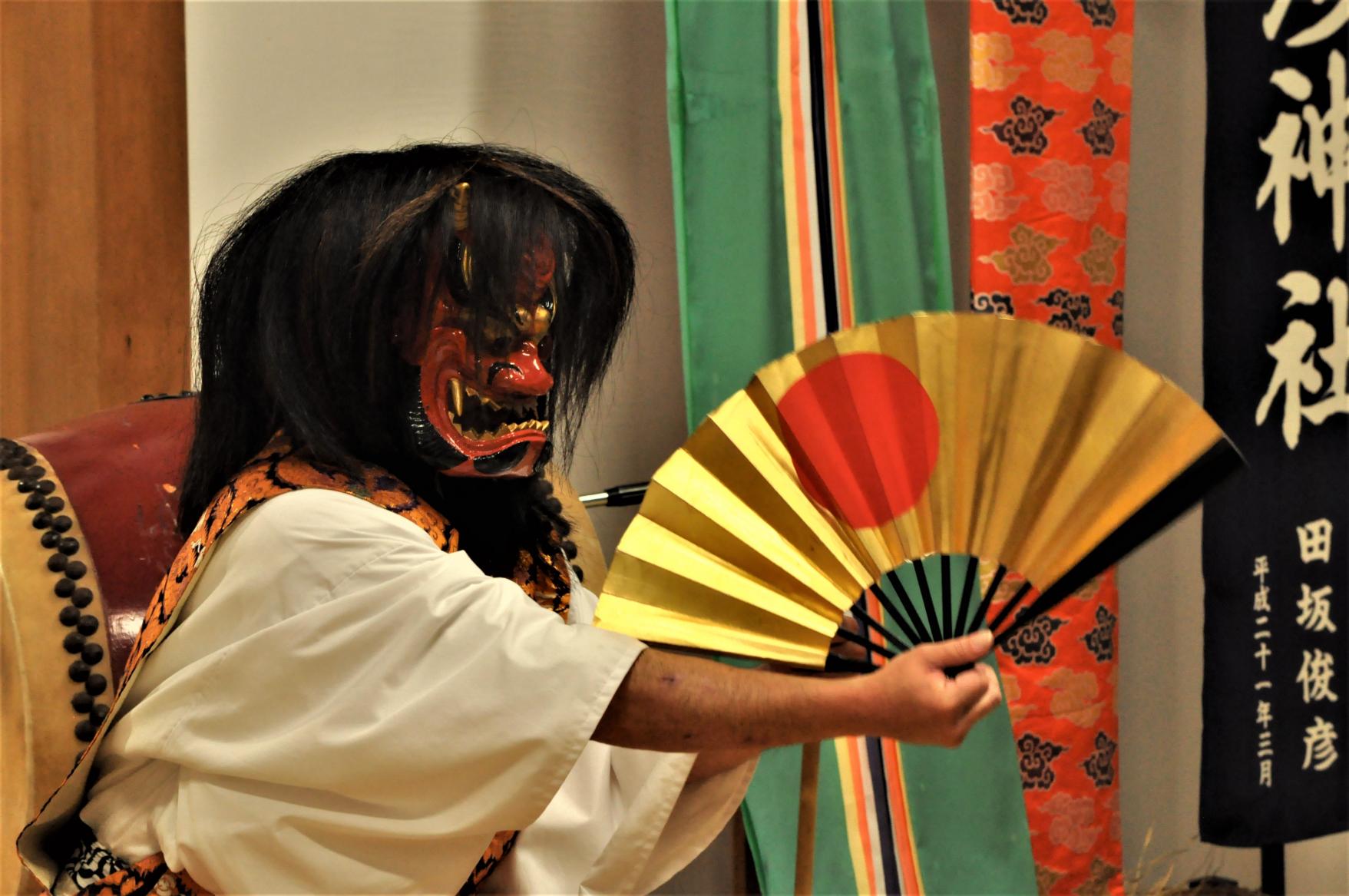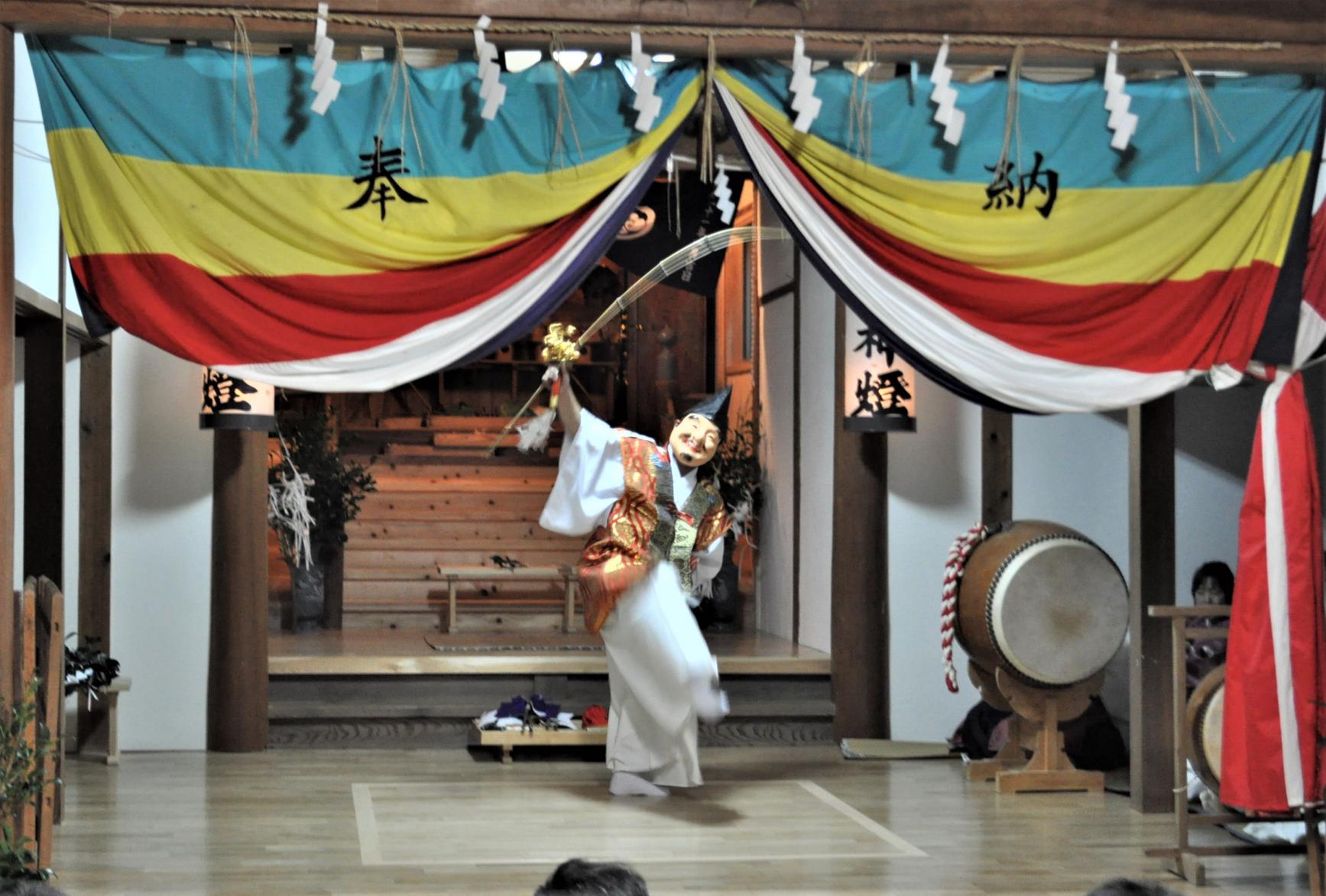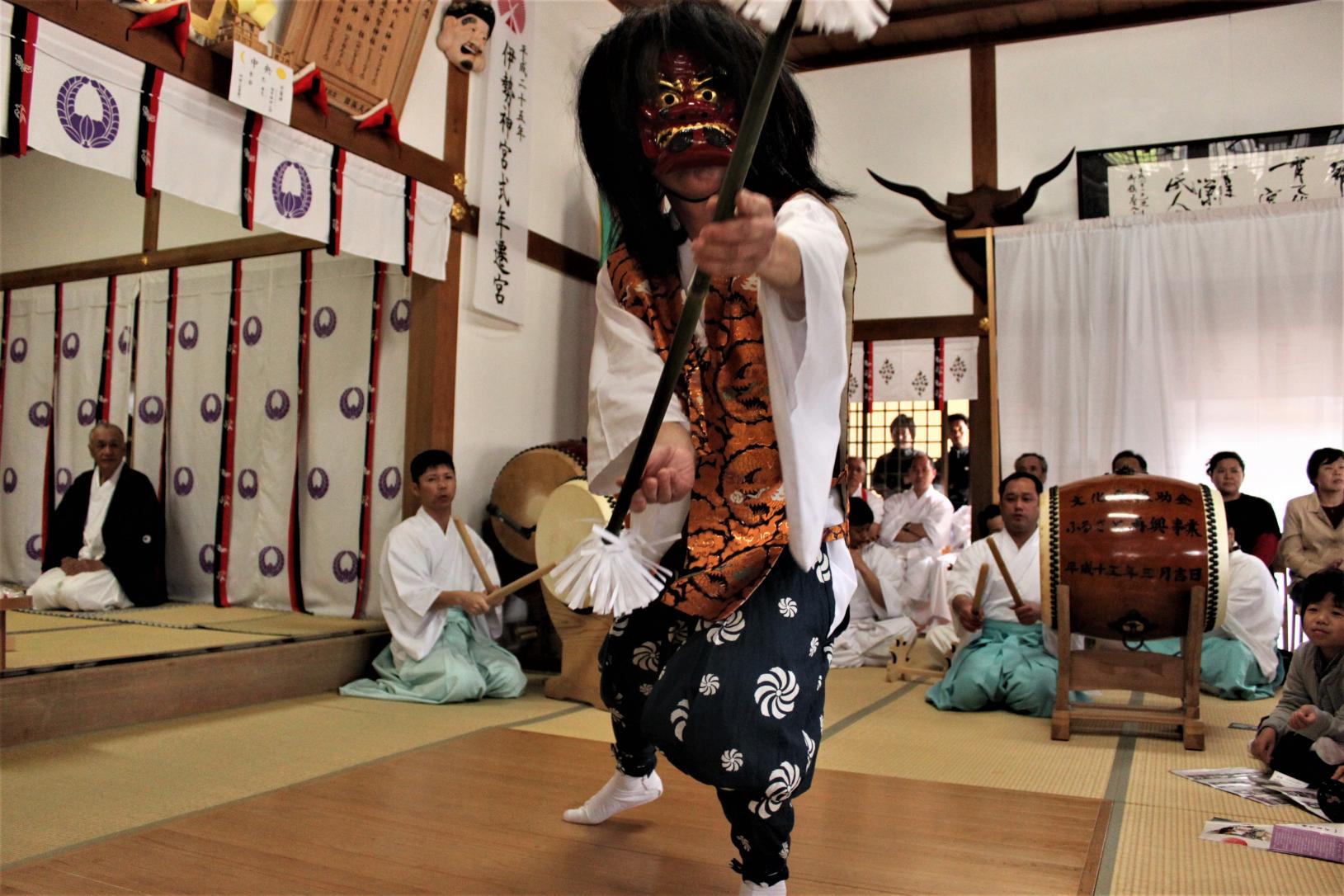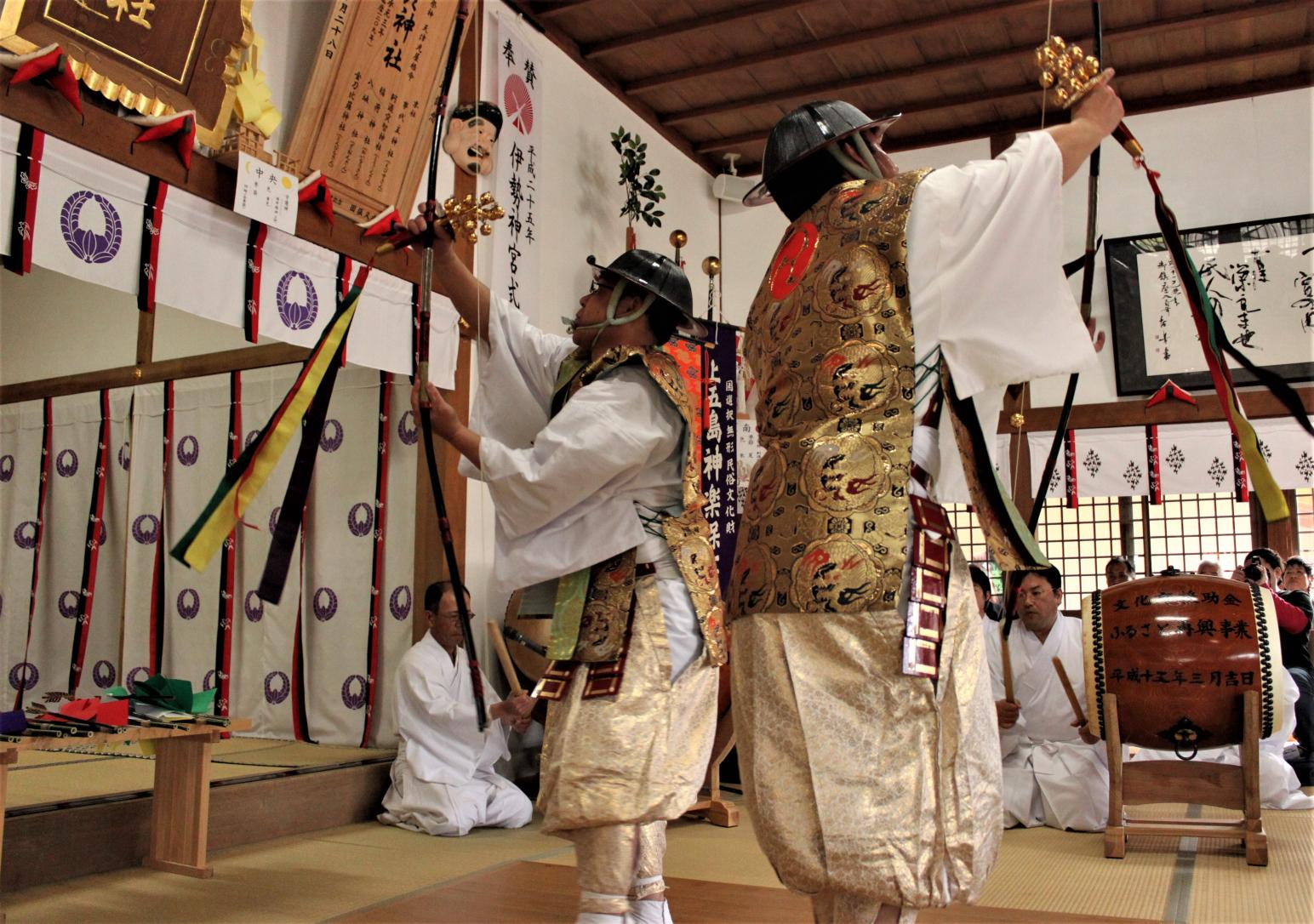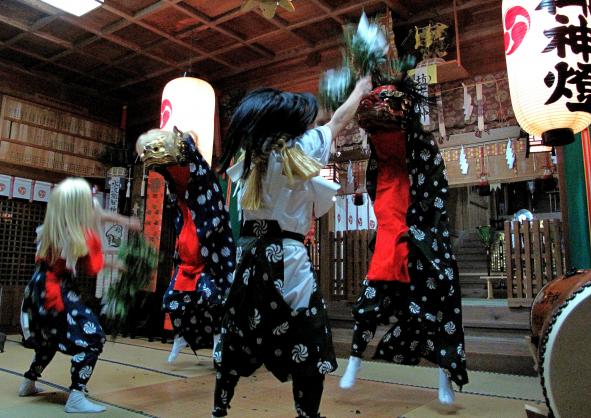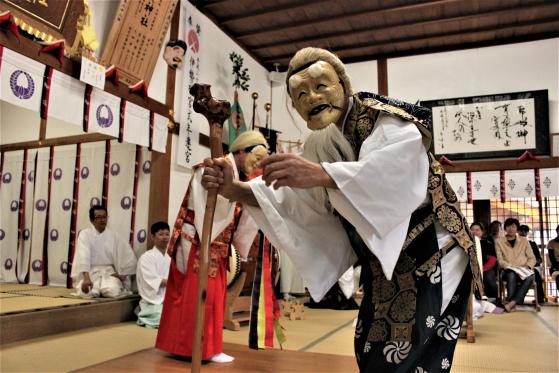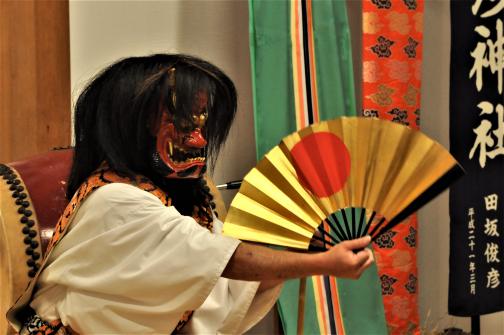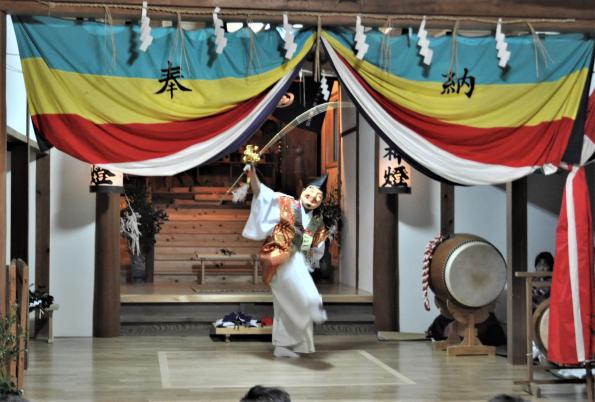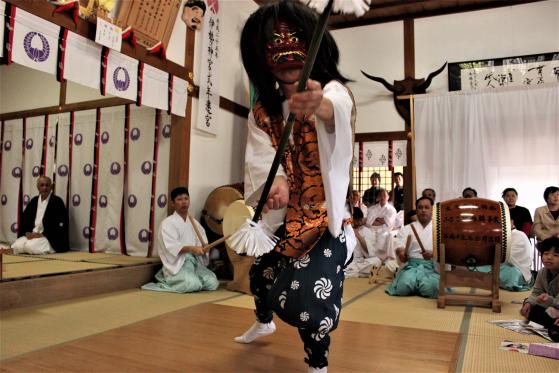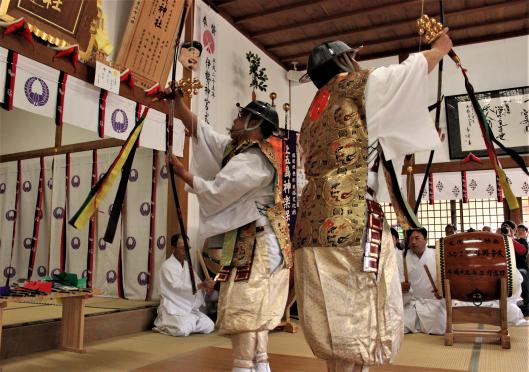Goto Kagura 【Important Intangible Folk Cultural Property】
A traditional artform unique to the Goto Islands with over 400 years of history
- Category
- Festivals & Traditional Events
-
Added to "My Favorite" list
Remove from your list
Add to "My Favorite" list
- 2653views
In Edo period Shinkamigoto, there were two types of Kagura. The first was Kamigoto Kagura, originating from Shinuonome and Kamigoto, both formerly part of the Fukue Domain. The second was Arikawa Kagura, practiced in Arikawa, part of the former Goto Domain. These forms of Kagura make up two of the seven forms composing the Goto Islands' "Goto Kagura", designated as a national intangible cultural property in 2002. In 2016, it was designated as a national important intangible folk property.
The tradition of Goto Kagura was mainly passed down by priests. It is performed around a one tatami space with movements based on circling back and forth around the space. In addition to a variety of harvest dances, there's lion dances, traditional shrine maiden dances, and other unique performances. Each is distinct and rich with history.
Watch and notice the similarities to the kagura forms of the rest of western Japan—as well as the unique ways in which Goto Kagura evolved. The performances express the distinct features of the area, as well as how the art of kagura changed over time.
In autumn, each shrine holds a fall festival. During this time, men will march the streets carrying elegant shrines, lion heads, and gorgeous flower carts to the beat of taiko drums and flutes. Goto Kagura will also be featured at each shrine.
Click to view schedule for the 2023 Autumn Festival.
| October 1st | Sunday |
Arikawa Shrine |
| October 2nd | Monday | Arikawa Shrine Masahiko Shrine (Sone) |
| October 8th | Sunday | Shiometenman Shrine (Naname) |
| October 9th | Monday (Holiday) | Shiometenman Shrine (Naname) |
| October 10th | Tuesday | Harami Shrine (Akao) |
| October 11th | Wednesday | Harami Shrine (Akao) |
| October 14th | Saturday | Enohama Shrine Narao Shrine Kotoshiranushi Shrine (Nikubi) |
| October 15th | Sunday | Enohama Shrine Narao Shrine Kotoshiranushi Shrine (Nikubi) |
| October 20th | Friday | Oyamazumi Shrine (Doinora) |
| October 21st | Saturday | Oyamazumi Shrine (Doinora) Tenman Shrine (Enora) Konarao Shrine Kogushi Shrine Masahiko Shrine (Sone) |
| October 22nd | Sunday | Tenman Shrine (Enora) Konarao Shrine Kogushi Shrine Masahiko Shrine (Sone) |
| October 23rd | Monday | Otomiya Shrine (Ogawara) |
| October 24th | Tuesday | Otomiya Shrine (Ogawara) |
| October 27th | Friday | Daio Shrine (Higashikonora) Hime Shrine (Aiko) Marodo Shrine (Amiage) |
| October 28th | Saturday | Daio Shrine (Higashikonora) Hime Shrine (Aiko) Marodo Shrine (Amiage) Masahiko Shrine (Nama) Yama Shrine (Funasaki) Akao Shrine |
| October 29th | Sunday | Masahiko Shrine (Nama) Yama Shrine (Funasaki) Akao Shrine Kumano Shrine (Azetsu) |
| October 30th | Monday | Tainora Shrine Kumano Shrine (Azetsu) |
| October 31st | Tuesday | Tainora Shrine |
| November 2nd | Thursday | Aokata Shrine Yasaka Shrine (Tomosumi) |
| November 3rd | Friday (Holiday) | Aokata Shrine Yasaka Shrine (Tomosumi) |
| November 4th | Saturday | Otomiya Shrine (Tatekushi) Shijikihaguro Shrine (Ota) |
| November 5th | Sunday | Otomiya Shrine (Tatekushi) Shijikihaguro Shrine (Ota) |
| November 12th | Sunday | Ojikimi Shrine (Urakuwa) |
| November 13th | Monday | Ojikimi Shrine (Urakuwa) |
| November 18th | Saturday | Motoyama Shrine (Tsuwazaki) |
| November 19th | Sunday | Motoyama Shrine (Tsuwazaki) |
| November 24th | Friday | Enokizu Shrine (Enokizu) |
| November 25th | Saturday | Enokizu Shrine (Enokizu) |
Information
| Address | 857-4211 長崎県南松浦郡新上五島町有川郷428-31 | |
|---|---|---|
| TEL | 0959-42-0964 | |
| Price |
Public showings: Free Private showing (reservation required): 32,400 yen per one group |



